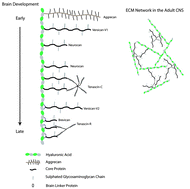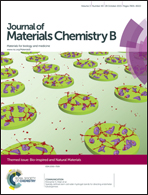Hyaluronic acid and neural stem cells: implications for biomaterial design
Abstract
While in the past hyaluronic acid (HA) was considered a passive component with a primarily structural role in tissues, research over the past few decades has revealed its diverse and complex biological functions, resulting in a major ideological shift. HA is abundant during normal central nervous system (CNS) development and, although down-regulated, remains ubiquitous in adult extracellular matrix (ECM). Significant changes in HA content are associated with pathological conditions, including stroke, traumatic injury and multiple sclerosis, and these changes likely disrupt repair by endogenous neural stem cells (NSCs). In this review, we describe recent findings in HA biology relevant to NSCs–focusing on the potential of HA-NSC interactions to mediate CNS regeneration. Currently, HA biomaterials are being developed to counteract matrix changes associated with CNS injury and disease, thereby promoting NSC survival and directing differentiation. In parallel, HA-based biomaterials engineered to mimic the native CNS microenvironment are being used to investigate the relationship between NSCs and their HA-rich surroundings within a controlled experimental space. As our understanding of HA-NSC interactions improves, so will the therapeutic potential of HA-based biomaterials. Efforts to better understand the relationship between HA bioactivities and biomaterial design parameters are already underway. Although significant progress has been made improving techniques for controlled fabrication of HA-based hydrogels with precisely defined features, there is still much work to be done. Ideally, future designs will incorporate multiple types of microenvironmental cues – orthogonally tuned in time and space – to direct differentiation of NSCs into various specialized lineages within a single biomaterial platform.

- This article is part of the themed collection: Bio-inspired and natural materials

 Please wait while we load your content...
Please wait while we load your content...